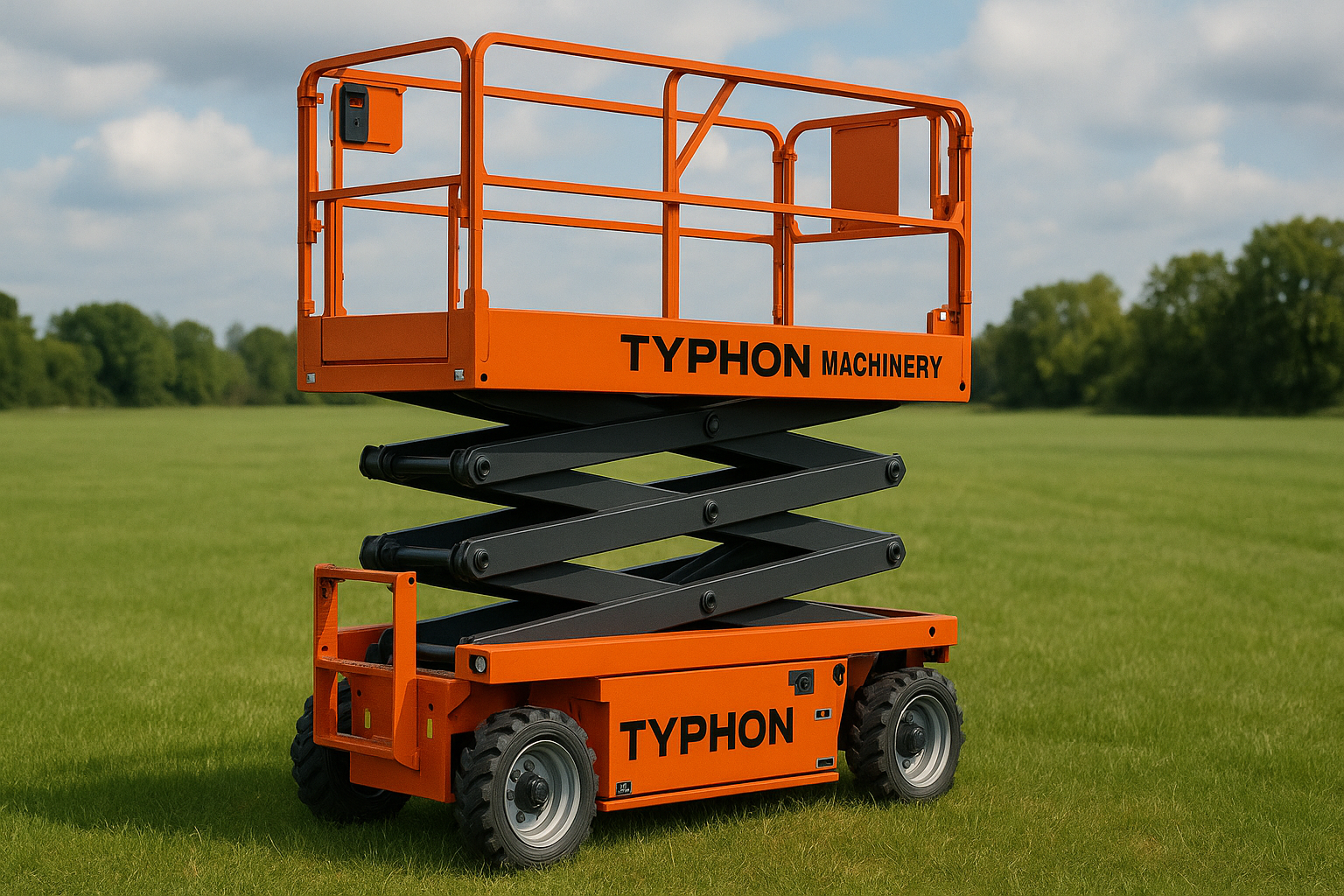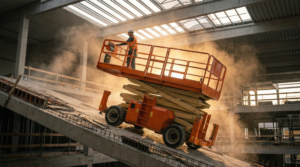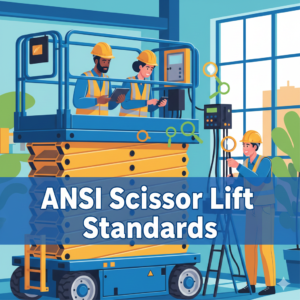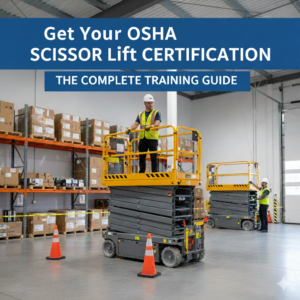Scissor lifts plays prominent role in the construction, maintenance, and warehouse operations because of their vertical reach and compact form capabilities. When nature becomes the backdrop for work—especially in off-road, bumpy, or grassy areas—the natural thing to ask is: Can you drive a scissor lift on grass?
The answer is: yes, but it is circumstantial and depends on the type of scissor lift and the condition of the grass terrain.
Our guide will cover issues like the safety of using a scissor lift on grass, the type of lift to use, precautions to be taken, and the methods of ensuring safety and performance on soft or uneven ground in detail.
Interdependence of Scissor Lifts and Terrain Compatibility
Scissor lifts are categorized into a number of types, namely, indoor (slab) lifts and outdoor (rough terrain) lifts. Some of the lifts are not capable of carrying out operations on surfaces like grass or irregular ones.
What to Know:
- Slab Scissor Lifts: Indoor Scissor Lifts are used mainly for clean indoor surfaces with little grip and are not recommended to be used on soft or uneven surfaces.
- Rough Terrain Scissor Lifts: Rough Terrain Scissor Lifts are the ones that are made for outdoor conditions and they are capable of handling grass, gravel, dirt, and uneven surfaces without any issues.
- Stability and Traction: The traction and therefore the load-bearing capability can be changed by the slipperiness of the grass and its softness, especially after the rains.
| Type of Scissor Lift | Best for | Can Drive on Grass? |
| Electric Slab Lift | Indoor smooth floors | ❌ Not Recommended |
| Diesel Rough Terrain Lift | Outdoor uneven ground | ✅ Yes |
| Hybrid Scissor Lifts | Mixed environments | ⚠️ Conditional |
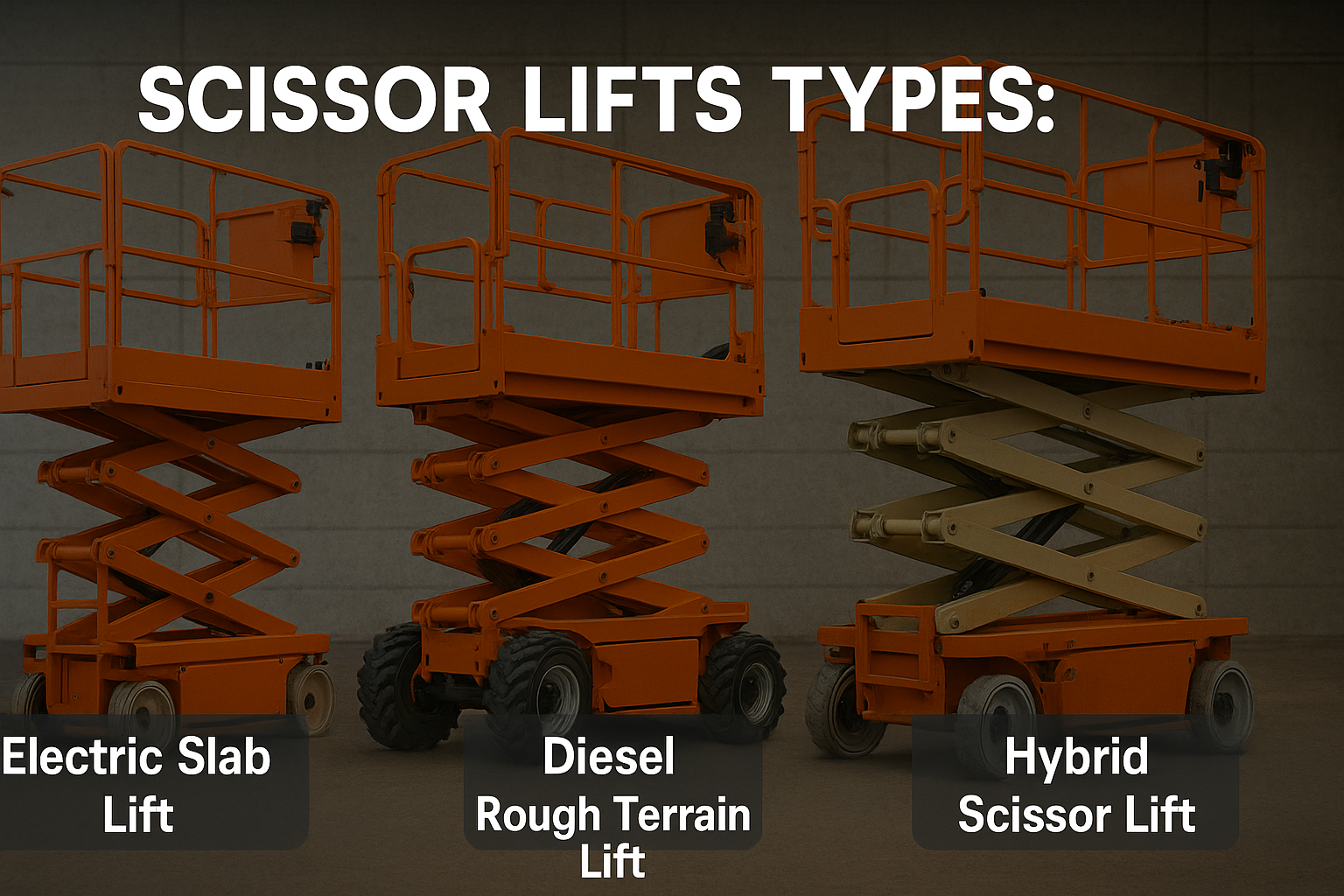
Type of Scissor Lift Best for Can Drive on Grass?
Before bringing a scissor lift onto a grassy field, it’s crucial to understand few important properties for a smooth work process and which type is appropriate for the job.
-
Slab Scissor Lifts
These lifts are small, need a charge, can be driven indoors, and have other characteristics such as:
- They are not fitted with wheel blocks or spring plates of heavy weight.
- Low ground clearance is normal for them.
- They can sink or tip over when running on grass and other soft, flesh-like surfaces.
Note: Don’t take slab scissor lifts onto grass.
These are built for off-road and rough terrain usage. Their features are:
- A 4×4 drive system is installed to supply more power and enable the vehicle to grasp and climb on hills.
- Generally, they have a stronger grip through wider and thicker tire walls of either a foam or air-filled type.
- The possibility of steady operations on the harsh surface is assured with the presence of outriggers.
Note: These are the right tools of lifting the grassy, sloped or soft muddy areas.
-
Hybrid Scissor Lifts
The engine-driven kind of vehicle that supports the internal electric motor is used here.
- They work good in areas like the office with a little outside of the facility.
- Their usage is on a case-by-case basis, e.g., the situation is suitable for the short grass, and the weather is good.
Note: Be careful when using this, as it is too sharp to use with rough or wet grass
Anticipated Risks of Running a Scissor Lift on Grass
The grass problem management situation includes the following risks wet, rough, or loose soil. Here is what you need to be careful about:
- Ground Collapse: Soil sinking occurs as a result of the pressure applied by the lift’s weight.
- Friction and Sliding: Not enough grip makes it easier for the lift to skid over unlevel areas, particularly inclines.
- Unleveled Ground: There are some regions that create obstacles such as bumps, roots, and slopes which can not only affect the safety of the lift but also the height at which it becomes safe to drive it.
Grass is very slippery and a lift seeking overturned is common as it is the most frequent unit of work outdoors!
Guidelines for Scissor Lift Use on Grass Areas Safely
When one has to drive a scissor lift on grass, one has to do extra preparation and be more cautious. Obey these safety measures in order to avert fatalities:
-
Make Use of the Correct Equipment
- Go for rough terrain diesel scissor lifts.
- Double-check that the machine has stabilizers and off-road tires.
-
Inspection of the Site
- Look for any concealed holes, uphill surfaces, and soft soil.
- Find out how moist the grass is since it is a big factor if it is wet grass the danger is even greater.
-
Adhere to Weight and Loading Precautions
- Do not violate the load limit of the scissor lifts.
- Keep in mind that the fact of lifting in uneven fields takes the risk of tipping to a higher level owing to the shifting of the center of gravity.
What’s the Best Moment to Avoid the Use of Scissor Lift on Grass?
Even if your lift is suitable, there are situations where you should still never operate a lift on grass.
Avoid if:
- Soil is too soft or the ground is wet.
- Heavy rain is going to fall.
- There are obstacles or slopes that the lift can’t handle as per the manufacturer.
- It’s an electric lift that’s supposed to be used indoors.
Be sure you know the characteristics of the terrain and the lift capacity before you start.
Alternatives to Scissor Lifts for Soft Grass Terrain
Scissor lifts are not the best solution in the case of grass-covered surfaces that might be neither safe nor efficient. It is worth the effort to think about Reach of other forms of equipment. How about using these below options:
- Tracked Boom Lifts – A good choice if grassy ground is the issue and you need to access places that are hard to reach because of the steeper hills being in the way.
- Aerial Lifts with Stabilizing Pads – Better stability is the advantage they offer.
- Portable Platform Ladders – Best for work of a lower level of height.
Pro Tip: Employ ground protection mats if you are walking on soft surfaces to displace the load over a wider area.
FAQs: Scissor Lifts on Grass
- Can you drive an electric scissor lift on grass?
No, the electric scissor lifts function is not intended for such ground. Transportation of electric scissor lifts on grass is likely to lead to them sinking, slipping, or toppling over due to the lack of good traction and stability.
- Do all-terrain scissor lifts work on muddy grass?
Yes, they do, though you have to be cautious. Though all-terrain scissor lifts can be used on muddy grass, the operator should evaluate the depth and the hardness of the land. The excess mud makes the lift being stuck is a possibility.
- Is it safe to lift a scissor lift on grass?
Only if the lift is explicitly mentioned as a rough terrain application and the grass is being dry, flat, and hard-packed, then it is safe. Otherwise, you are risking it over.
- Can I use plywood under a scissor lift on grass?
Yes, it is possible to use thick plywood or ground mats under the lift, making the weight more evenly distributed, and potentially there will be risks of the lift sinking drastically, especially during stationary operation.
- How do I stabilize a scissor lift on uneven grassy terrain?
Use outriggers (if these are part of the lift) to stabilize the lift Raise the lift by using wedges, jack pads, or ground mats. Make sure the lift is one hundred percent level before you lift.
- What happens if a lift gets stuck in the grass?
If the lift is stuck, do not engage in attempts to push the lift out. Use a tow hitch or winch and consult the manual’s extrication guidance to avoid both the lift and terrain from harm.
Final Thoughts: Can You Drive a Scissor Lift on Grass?
The capability to operate a scissor lift on grass is mostly determined by the following: lift type, ground conditions, operating precautions. It is not advisable to use slab lifts on grass. Be that as it may, rough terrain scissor lifts are designed especially for these situations and, when properly equipped, are perfect.
Quick Recap:
- Employ ground clearance lifts powered by rough terrain diesel on grass.
- Operate indoor slab lifts on soft ground at a distance.
- Take care of the (moist/slope) ground condition before driving.
- Use mats or plywood etc. to prevent instability.
Following correct practices, selecting the right equipment, and complying with safety requirements will enable you to drive scissor lifts on grass with the least amount of risk possible.

